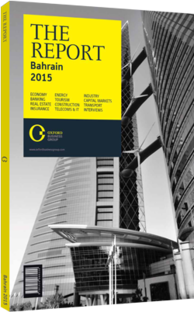Tim Murray, CEO, Aluminium Bahrain (Alba): Interview

Interview: Tim Murray
What strategies is Alba pursuing to develop and enable downstream businesses and sub-sectors?
TIM MURRAY: For the last couple of years, we have been able to gradually increase our production capacity by an average of 1% year-on-year without making any significant capital investment. The introduction of Alba’s sixth production line is expected to add around 400,000 metric tonnes to our existing capacity, bringing Alba’s total production capacity to 1.3m tonnes a year.
The aluminium industry contributes nearly 10% to Bahrain’s total GDP, making it one of the country’s more significant economic activities. Enabling the development of downstream sectors will help Bahrain capture a major portion of the value chain, create many coinvestment opportunities and provide 2000 new jobs.
How have oversupply and the downward trend of aluminium prices affected profitability?
MURRAY: In my view, the low prices of aluminium on the London Metal Exchange (LME) are underpinned by high aluminium inventory relative to demand. Unless we see an easing in stock inventories and substantial closures in the pipeline, aluminium prices will continue to face downward pressure in the short run. Profitability in the aluminium industry is highly dependent on scale and the availability of gas, but the industry is also vulnerable to LME prices. The higher the LME price, the better it is for profitability. By having access to cheap gas, profitability will be enhanced even further.
Physical demand is still healthy: around the world we have seen physical premiums on the rise, given the downward trend of LME prices. The industry is forecasted to grow at 5-6% a year and we believe that this growth will be sustained for the coming 5-10 years.
Will the recent launch of aluminium futures contracts on the Chicago Mercantile Exchange (CME) challenge the LME’s dominance?
MURRAY: The LME aluminium pricing mechanism does not truly reflect the actual market fundamentals – aluminium demand is healthy and is expected to grow. The LME pricing mechanism has been the focus of much criticism of the exchange, and long queues for delivery of the metal have helped create a dislocation between the physical aluminium market and the LME price. An alternative pricing mechanism is welcomed, but there are questions about whether the CME will be able to generate sufficient volume and liquidity to create an effective alternative to the LME. If it can, then the new competition would certainly have a profound impact on aluminium prices.
What kind of initiatives are under way to ensure operational safety for your employees? How successful have these been?
MURRAY: Alba believes that all work-related injuries and illnesses are preventable, and throughout 2014, the company made rigorous efforts to strengthen its safety culture. These efforts yielded excellent results, with the company successfully achieving 4m work hours without any time lost due to injury.
Apart from this, department-specific health and safety events are continuously held, which focus on issues related to each specific unit. Several safety systems are also in place, such as weekly safety hours, safety talks before each shift, near-miss incident reporting, monthly departmental safety reviews and employee-led behavioural observations. Alba has broadened safety measures across the organisation with frequent contractor safety meetings, which encourage contracting companies to continue to comply with Alba’s safety standards.
Along with work safety, Alba has focused on spreading the safety culture beyond the company – to the families of all employees, especially their children. For example, it conducted the highly successful Child Car Seat Safety awareness campaign, wherein employees were informed about car seats and gifted age-appropriate car seats. The campaign also included the general public by distributing car seats in popular malls.
You have reached the limit of premium articles you can view for free.
Choose from the options below to purchase print or digital editions of our Reports. You can also purchase a website subscription giving you unlimited access to all of our Reports online for 12 months.
If you have already purchased this Report or have a website subscription, please login to continue.

